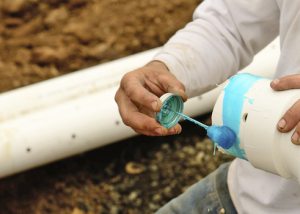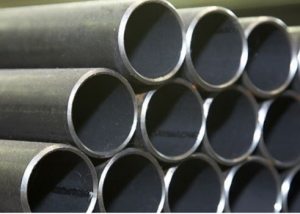Installation of gas pipes is carried out regularly. Welding gas pipes yourself is prohibited. Such work can only be done by a specialist with extensive experience. Most often, the material for gas pipes is steel. Pipeline components are connected by plasma, argon-arc technology or electric welding. All types of welding should be carried out in specially equipped places.
Content
Features of gas pipeline welding
The choice of technology for welding gas pipes depends on the material of their manufacture. In the gas industry, metal and polymer pipes are used, their welding can be:
- electric arc;
- gas (plasma);
- argon arc;
- diffusion.
The method of welding depends on specific conditions, for example, the wall thickness of the pipe, the type of plastic or steel, the outer diameter, etc. The most common is the welding of gas pipes by electric welding. Before starting work, the pipe edges are cleaned from corrosion and contamination. If the wall thickness of the pipe is more than 4 mm, then the edges are beveled, which affects the quality of metal heating.
Welding can occur from left to right and vice versa. The first option is used when the thickness of the pipes is more than 5 mm. The flame is directed to a section of pipe that is already welded. A filler wire moves behind the burner.
Note! This method saves gas consumption and improves productivity.
When the burner moves from right to left, it passes through parts of products that are not yet welded. A consumable electrode is in front of the burner. This method is suitable for joining thin-walled pipes. Welds when working with gas pipes are classified into vertical, horizontal, ceiling and lower.
Argon arc welding
A feature of TIG argon arc welding (Tungsten Insert Gas) is the use of refractory electrodes. They do not fade during the formation of a weld. An arc arises between the metal surface and the electrode after current is applied. Gas (most often argon) enters the working area through the nozzle, which blocks the access of oxygen. The seam is formed in one of the ways:
- due to the melting of the edges of the metal under the action of an arc;
- through the use of filler wire.
Such welding of gas pipes allows you to get a good seam on thin metal products. Equipment for such a connection technology is represented by rectifiers and argon inverters. The TIG rectifier converts AC to DC. The TIG inverter produces DC power with ideal characteristics. Some models of devices give out alternating current. When working with similar equipment, it is possible to control the arc and obtain a high-quality seam.
The main characteristics of apparatus for argon welding of pipes include the type of current and its maximum value. The higher the maximum current value, the thicker the electrodes can be used.
Welding of steel pipes is done with equipment using direct current (DC). Different argon-arc installations have their maximum values of the welding current, which range from 150 to 500 A.
MIG / MAG welding
The connection of pipes by electric welding according to the degree of mechanization is divided into manual, automatic and semi-automatic. The technology for connecting gas pipes MIG / MAG (Metal Inert / Active Gas) is based on arc welding using a metal consumable electrode (wire) in the presence of an inert / active gas. Filler wire is fed automatically.
This method is implemented by such devices:
- semi-automatic inverter welding equipment;
- semi-automatic welding machine;
- a set of a supply mechanism for a consumable electrode and an arc welding source.
MIG / MAG welding is carried out by feeding a metal wire into the connection zone with a gun and melting it in an arc. It is located between the product and the melting electrode. The molten wire and edges form a weld pool. Crystallized seam, arc, weld pool metal and wire are protected by gas from environmental influences.
Often this method is also called semi-automatic, since the welder must manually move the torch along the seam. The wire is simultaneously a filler material and a conductive electrode.
Important! It is better to adjust the gas supply using gearboxes with flow meters.
The MIG / MAG method can be used to weld low- and high-alloy steels. The quality of a welded joint by electric welding depends on the arc voltage, the feed rate of the consumable electrode, the gas supply and welding speeds.
Advantages and disadvantages of welding methods
Advantages of argon welding:
- high quality weld, reliable pipe connection;
- long service life;
- the ability to weld stainless steel and titanium.
The disadvantages include special training and the lack of the ability of some devices to work in DC and AC / DC modes.
The advantages of MIG / MAG welding are high productivity, low smoke, ease of automation of the welding process and the absence of slag. This method has limitations in outdoor use and the inconvenience of having a gas bottle.
Semi-automatic welding of gas pipes can provide high quality joints on metals of different thicknesses, the ability to weld in many spatial positions, low cost of work in the case of the use of active protective gases.
Butt welding of polyethylene gas pipes is quite common and provides low cost, high speed and ease of installation, as well as the ability to connect pipes having diameters of 50-1200 mm.
Gas welding of steel pipes
Gas welding is based on heating the pipe edges with an oxygen flame and filling the gap formed with molten metal. Gas welding provides a connection with worse mechanical properties than electric welding, but it allows you to couple small diameter pipes with wall thicknesses up to 3.5 mm. For work, you will need a gas burner and a cutter.
Two gases are involved in the welding process - oxygen and acetylene. Oxygen supports the combustion of acetylene. It is located in special containers under high pressure, which during welding is reduced by the use of a gearbox. The combustion temperature of acetylene can be 3 thousand degrees. Instead, another combustible gas may be used.
Important! When burning gas, the flame temperature should be 2 times higher than the melting temperature of the welded metal.
The welding wire is selected based on the identity of its chemical and physical characteristics with the same parameters of the parts being welded. The use of fluxes helps prevent metal oxidation. Gas welding allows you to get a strong connection of thin-walled pipes without burning metal.
Butt welding of polyethylene gas pipes
Welding of gas pipes made of polyethylene can be performed by devices with mechanical or hydraulic drives, as well as devices with program control. Special tables available in the instructions for the devices regulate, depending on the wall thickness and pipe diameter, the values of the welding parameters - temperature, heating time, etc.
The stages of butt welding of gas polyethylene pipes are as follows:
- Parts of the pipes to be welded are installed in the welding machine.
- A hot plate is placed between the parts to be joined.
- The ends of the pipes are pressed against the plate with some effort.
- After some time, the polyethylene melts.
- After reducing the pressure on the pipes, the ends are heated.
- The hot plate is removed.
- Parts under some pressure immediately connect.
After complete cooling, the pipeline is ready for operation. The seam is very durable and high quality. It is able to withstand pressure up to 4.5 MPa.
Features of welding in the apartment
For safety reasons, before starting work on welding in the apartment, gas is blocked. Domestic gas is easily flammable, therefore, if the pipes are not blocked in time, this can lead to a fire. Welding pipes of small diameter can be carried out by one person.
Note! To connect pipes with different diameters, special adapters are used that will reduce the likelihood of gas leakage.
Often welding gas pipes in the apartment is done butt. In this case, the arc must be led so that the edges of the product have time to melt a little, and the necessary amount of filler material is deposited on them. This will ensure the quality and aesthetics of all seams.
Digesting a gas pipe in an apartment is often required when transferring it. After the gas is shut off, the process proceeds in the following sequence:
- The gas pipe is purged to remove remaining gases.
- The waste pipe is cut off, and the hole formed is welded.
- A hole is drilled in the required place and the outlet of the metal pipe is welded to the gas pipeline.
- A tap is mounted to the tap and tap to the plate.
The presence of leakage is determined using special tests. If it is detected, re-installation is carried out. Upon completion of work, gas is started and the functioning of the pipes is checked.
Safety measures for gas pipe welding
If you need to transfer or digest gas pipes in the apartment, you should contact the gas service. It is forbidden to independently carry out such work in an apartment building; if necessary, they are performed by masters of specialized organizations.
During welding, particles appear in the air from oxidation of metal vapor. Explosion is a danger due to improper handling of the acetylene generator and burner in the event of a backfire. In addition, ignitions of the valves of oxygen reducers are possible either with a sharp opening of the cylinder. The most dangerous is the explosion of an oxygen cylinder, which is under high pressure.
Gas welding is harmful to vision by the action of visible and infrared rays. It is forbidden to carry out welding work close to flammable and flammable materials. The room where the gas pipes are welded must be well ventilated.
Before gas is supplied to the pipes after welding, all joints must be checked for leaks. Only a specialist can weld gas pipes in a quality and safe manner.













